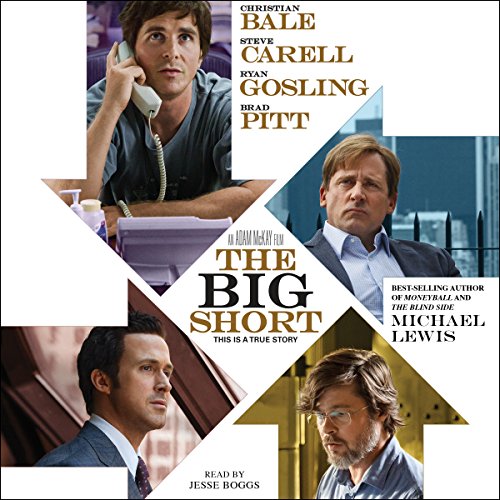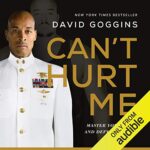The Big Short: Inside the Doomsday Machine (Liar’s Poker #2) audiobook
Hi, are you looking for The Big Short: Inside the Doomsday Machine (Liar’s Poker #2) audiobook? If yes, you are in the right place! ✅ scroll down to Audio player section bellow, you will find the audio of this book. Right below are top 5 reviews and comments from audiences for this book. Hope you love it!!!.

Review #1
The Big Short: Inside the Doomsday Machine (Liar’s Poker #2) audiobook free
I usually read the book before I watch the movie, but this time I didn’t.
As soon as I finished watching the 2015 movie The Big Short, I immediately decided to read Michael Lewis book The Big Short: Inside the Doomsday Machine, which forms the basis for the film. Lewis, who was himself a Wall Street bond trader in the 1980s and 90s, is the author of several non-fiction books, many of them dealing with the world of finance.
The Big Short: Inside the Doomsday Machine isnt so much about the financial crisis as it is about what caused the meltdown in the first place. Lewis tells his story through the actions of four separate investment groups: Scion Capital; managed by Dr. Michael Burry; FrontPoint Partners LLC, led by Steve Eisman; Cornwall Capital, co-managed by James Mai and Charlie Ledley; and Greg Lippmann, a bond trader with Deutsche Bank. These investors, each working independently from each other, correctly foresaw the collapse of the housing markets in the United States in 2007. Nobody else saw it or wanted to, for that matter.
For years, many of the worlds biggest investment and commercial banks had been investing heavily in high-risk subprime mortgages. This caused housing prices to rise, and a housing bubble to form. But soon, variable interest rates on these mortgages would begin to rise sharply, and massive numbers of people with little or no income would begin to default on mortgages they could no longer afford. Our four investors each decided to sell short the housing markets by investing in credit default swaps a form of insurance against mortgage defaults. They essentially were betting against the housing markets: when (not if) the housing markets failed, the investors would end up making millions
The Big Short is a very well written book. Its fast-paced, easy to read, and short (less than 300 pages). Michael Lewis story is very much character-driven. His profiles of the main players are surprisingly detailed, brutally honest, and fascinating. Some people who start out looking like villains end up as quite heroic and admirable figures. Others do not fare so well.
One of the things Michael Lewis does best is explain many of the technical aspects of the financial system in a manner that I could easily understand. Although Im sure mortgage backed securities, credit default swaps, and collateral debt obligations are probably a lot more complicated than even Lewis presents them, I found his explanations simple, straightforward, and very useful. As a result, I gained a better knowledge of the financial crisis.
The Big Short: Inside the Doomsday Machine is a very informative and entertaining book. For those looking to understand the basics of the 2008 financial crisis, this is one very good place to start. Highly recommended.
Review #2
The Big Short: Inside the Doomsday Machine (Liar’s Poker #2) audiobook streamming online
I rarely give a book five stars, but I do so without hesitation in this case. If you want to understand all the complexities of the 2008 economic meltdown, in plain English without arcane statistics, this is the book for you. Above all, Michael Lewis has laid bare the combination of corruption, incompetence, arrogance, and outright criminality at the highest levels of the American financial industry and government that produced this disaster. The book lays waste to the idea that American capitalism, as currently practiced, will produce a better world for us all. Along the way, it reveals the pure fiction behind the central tenets that guide our economic elite, such as:
–The executives that control our major banks and corporations are insightful entrepreneurs with unique skills for creating wealth and new businesses
–There is too much government regulation
–Cutting taxes for the wealthy produces more prosperity for all
Remember: the book destroys these myths, not as an ideological diatribe, but from the perspective of brokers and analysts who, themselves, participated in the system but saw the house of cards that their more powerful (and well paid) colleagues were building. Not only saw it, but bet their careers and economic futures that it would ultimately collapse–and they were right. It’s this book’s stunning, fact-based revelations of the corruption, incompetence, and greed in our corporate executive suites that makes it an instant classic. It indicts a whole generation of America’s corporate and financial leaders.
And remember: these same leaders, or their like-minded clones, are still in place, and already trying to turn back the meager reforms put in place to prevent a repeat of their evil. They repeat ad infinitum the shibboleth that government regulation, not corporate malfeasance, is the source of our economic malaise. They further that Big Lie by using their ill-gotten wealth to control the media and to elect their lackeys to office. They have no shame, no sense of decency. Left unchecked, they will destroy America. As they came close to doing in 2008.
Review #3
Audiobook The Big Short: Inside the Doomsday Machine (Liar’s Poker #2) by Michael Lewis
After watching the movie, I wanted to check and see how much of the story appeared factual. I learned that the movie was based on this book (duh!) and the author had a hand in making the movie (I think he was one of the screenwriters). Anyway, I found the book engrossing, and even more exasperating than the movie. I think it helped to have watched the movie first, as you could visualize the various characters (Ok, this is the Brad Pitt character, this is the Christian Bale character, etc.), which made it easier to follow. The book, as expected, goes into much greater depth than the movie, which is what I was looking for, and which I found very interesting. I’m really impressed that they were able to condense this long, complex, multi-faceted story into a movie that really works. After reading this, I’m a lot more apprehensive about the integrity – not only of the financial services sector – but of government’s ability (and will) to exercise oversight, and of the competence as well as integrity of large organizations in general. If it were merely a matter of corruption, and government’s feeble attempts at knowing about it and doing something about it, that would be one thing. No, the author convincingly argues, it was a matter of MOST of the actors in the financial sector and the SEC, etc., NOT UNDERSTANDING what was going on. And, with the financial health of most of much of the world at risk. Scary.
Review #4
Audio The Big Short: Inside the Doomsday Machine (Liar’s Poker #2) narrated by Jesse Boggs
For anyone interested in understanding the causes of the sorrows of our times, Michael Lewiss ‘The Big Short’ is essential reading. That its also well-written and highly entertaining (I found myself laughing on several occasions) only adds to the joy of the book.
We all know, some years after the event, that a great many people saw the 2007 crash coming. Michael Lewiss book, however, focuses on the handful of people who really saw it coming and left proof that theyd done so by staking large amounts of money betting that it would.
Take Michael Burry. This is a man we get to know better and better through ‘The Big Short’, which is appropriate because the events it describes include his own awakening self-awareness (one of the charms of this book). He was perhaps the first to see that the US mortgage industry was lending increasing amounts of money to people who had not the slightest chance of being able to keep up the repayments.
Those mortgages were being sold on to other financial institutions, and then being collected together into bonds which could be sold as packages to yet others. A market quickly developed in those bonds, which developed their own prices quite independent of any value the initial mortgages themselves might have.
In fact, the process went still further, with collateralised debt obligations (CDOs) which contained bits of many bonds and could themselves be sold on.
The explanation Ive just given is almost certainly inadequate, but I dont pretend to understand how individual mortgages got packaged into bonds and bonds into CDOs. But thats the books essential point: very few people did understand. These were opaque instruments, not understood by the people who traded in them or by the executives of the Wall Street firms which employed the traders.
They didnt understand, but they knew that it was in their interest that they keep being created, that their price keep increasing and that the market stay buoyant. So they did all it took to maintain the flow of the instruments which meant making more and more loans to people less and less able to afford them and to keep the price high.
In one of his most damning revelations, Lewis explains how Wall Street maintained pressure on the ratings agencies, whose staff were simply not of a calibre to withstand it. So the agencies continued to award to rate these essentially rubbish bonds triple-A. That allowed their prices to be kept floating ever more ludicrously higher.
What the few people like Burry (Steve Eisman, Greg Lippmann and the founders of Cornwall Capital also play major roles in the book) had understood was that this whole structure was ultimately built on lousy loans. It couldnt be sustained in the long term the whole tower eventually had to crash. So the trick was to find a way to bet against it. Thats the process known as selling short.
Normally, it involves borrowing. You might borrow pounds today to buy dollars, in the belief that the pound will fall, so when you come to buy pounds to pay the loan back, it will take fewer dollars than youve realised today; or you might borrow shares to sell today, believing that when you come to buy them again to reimburse the lender, they will cost you less. Large amounts of money can be made that way, but the risk is colossal: if the shares rise instead of falling, or the pound increases in value against the dollar instead of devaluing, your losses can be immense. In fact, they are unlimited.
As it happens there was no mechanism to borrow mortgage-backed bonds in the years leading up to 2007. What there was, however, was a way of insuring against them defaulting. The so-called credit default swap (CDS) meant paying a quarterly premium, against the insurer paying out the full value of any default on the bond if the bond became worthless, the insurer paid out the face value at which it had been sold.
One can imagine that this was initially a legitimate form of insurance (though it wasnt regulated as ordinary insurance is). If youve lent $100m to someone whose credit you believe is good, you might nonetheless want to take out some insurance against his being unable to pay you back; if someone is prepared to insure the full value for, say, two or three hundred thousand a year then the chances are that you will only be out of pocket by a small percentage of the interest you make on the loan, and usually the insurer will not have to pay out anything (just as in insurance generally: most houses dont burn down, so the insurers turn the premiums into pure profit). Youll have made a small reduction in your profit for peace of mind.
Until nearly the end, the Wall Street firms were so convinced of the solidity of the sub-prime mortgage market, that they were more than happy to issue large quantities of CDSs. They were happy to insure the bonds. Interestingly, the men who bet against them didnt even have to own the bonds they were insuring: they could take out CDSs against the bonds without buying them in other words, they were making pure bets.
This was the Big Short. They were taking out fire insurance on houses belonging to other people, which they were convinced were already burning. And they made a packet.
The main lesson for us? They did it because they were alone in understanding what the people paid huge salaries to manage the industry failed to grasp.
And the saddest lesson? No lessons have been learned. The finance sector was bailed out by the taxpayer. It goes on paying its senior players wildly excessive salaries. And it continues to pursue huge profits from financial instruments they dont understand.
P.S. The film (same title) is not at all bad, either.
Review #5
Free audio The Big Short: Inside the Doomsday Machine (Liar’s Poker #2) – in the audio player below
In this book, the author focuses on the activities of a small group of people, in many ways eccentric amateurs, and initially totally unknown figures to the big beasts in the rarified world of investment banking, who foretold the crash of the US mortgage bond market that was the start of world-wide financial turmoil in 2008, and in so doing profited greatly. By a huge amount of tedious work, reading boring, jargon-heavy literature put out by the banks and other financial institutions, they realized that there was a massive fraud being perpetrated on investors in this bond market, an area that had rapidly come to hugely outstrip the traditional equity market. The first part of the conspiracy was to lend billions of dollars to house buyers who clearly did not have the means to meet the payments in the long term. These were the notorious subprime mortgages. The banks were then packaging these mortgages into financial instruments called collateral debt obligations (CDOs) and persuading the rating agencies to give 80% of them a triple-A rating on the basis that the CDO contained a few low-risk loans. They could then be sold to eager buyers worldwide and earn the bank substantial fees.
But it didnt end there. Those that failed to get the desired rating were simply repackaged, so that all these dubious products were eventually classed as risk free. This was the second part of the conspiracy and a huge failure by the rating agencies (who were paid by the banks). They failed to examine in detail the structure of a given CDO, but simply accepted the banks assessment. The situation rapidly spiraled out of control. A CDO-A might contain some of the mortgages in CDO-B that in turn might contain some of the mortgages in CDO-C, and the latter might even contain some mortgages that were in CDO-A. This was an Alice in Wonderland world where it was impossible to give a true value of any CDO, and its worth was what the bank said it was worth. Even the senior staff at the banks that were selling the CDOs didnt have a full understanding of what was happening.
This is where the outsiders entered. First they realized that the original loans were often being made to people without asking for proof of income (liars loans) and that the home owner was offered a low interest rate (the teaser rate) initially, typically for the first two or three years. They argued that after this period expired there would be a high probability that the owner would default and, crucially, that this would happen to the vast majority of loans within any given CDO, because they would all be unable to pay for the same social reasons. The banks, however, had risk models that only considered a worse case scenario of just a few percent failures. If they could take out insurance, via what were called credit default swaps (CDSs), against a failure of a CDO, they argued that they would only have to wait a couple of years or so before the low-rate period expired and the insurance would have to pay out. Throughout they remained worried that they had missed something, because the logic seemed so obvious, they couldnt understand why the banks themselves had not seen it. Eventually they did of course, and much later started to cynically (even corruptly?) bet that the very bonds that they had issued would fail.
Initially, the outsiders had hurdles to overcome. They had difficulty finding any bank that would sell CDSs to them because they were mere minnows with only small funds. However, these hurdles were overcome and to some amusement of the banks they started to accumulate substantial positions in bets that the CDOs would fail, and at only a small cost in premiums. It was a nail-biting time because the price of CDOs continued to be stable, even sometimes rise, despite the increasing rate of defaults on the underlying loans. But the end, when it came, was very rapid, just as the outsiders had predicted. Indeed the losses were so great that they feared the big banks would themselves fail and so be unable to pay out on the CDSs. In great haste in the last stages of the collapse they scrambled to offload them and managed to get out before the final collapse.
The rest is history: several major bank collapsed; hundreds of billions of dollars were pumped into the system to keep others afloat; Congress stepped in and bought subprime mortgage assets for up to 2% of the US GDP; and senior bankers who had lost billions in the debacle were allowed to walk away with bonuses of tens of millions of dollars. But the householders who had defaulted on their loans received nothing and were dispossessed.
What this sad story revealed was widespread cynicism in the financial industry, banks, rating agencies and regulatory bodies, bordering on corruption, and a remarkable lack of understanding of the fundamentals at the highest level in the banks. There have been many books about the causes of the financial crash of 2008, but few can match this one in the detailed knowledge of its author and the clarity of his presentation. There is some repetition in explaining technicalities, but this is acceptable. If the reader understands it first time these can easily be skipped over without loss of continuity. Overall it is an excellent book.
Recommend Books
Galaxyaudiobook Member Benefit
- Free 2000+ ebooks (download and online)
- You can see your watched audiobooks
- You can have your favorite audiobooks
Galaxy audio player
If the audio player does not work, please report to us, we will fix it as soon as possible (scroll up a little you will find the "REPORT CONTENT" button).












0 Comments: